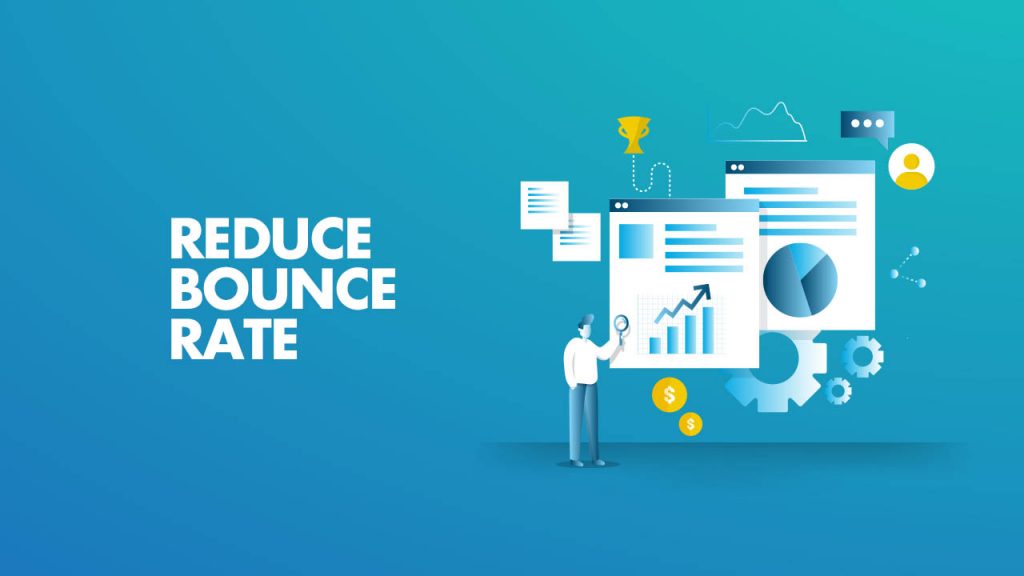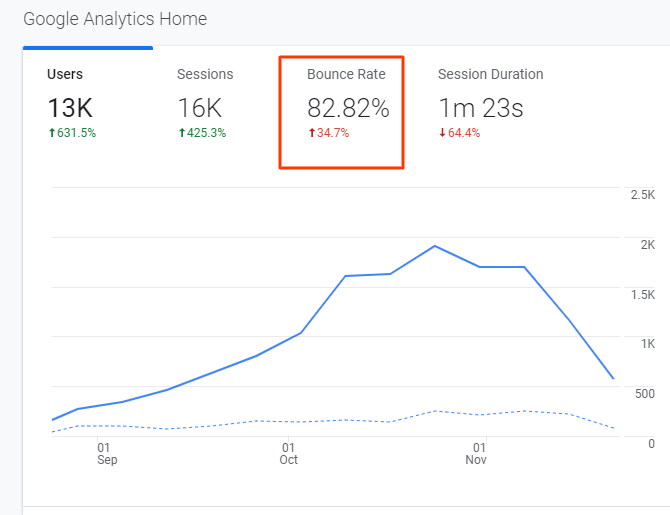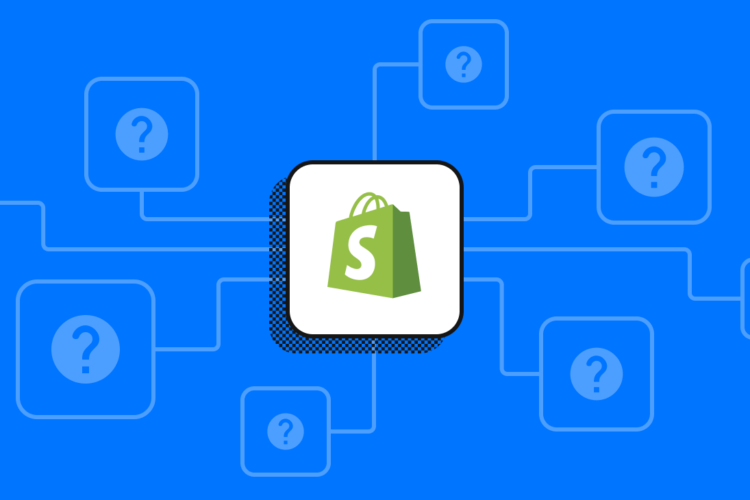
Noticed a visitor landing on your site and exiting instantly- but why did this happen? It is the most feared bounce! It just takes 0.05 seconds for visitors to understand if they like your eCommerce store enough to shop around or bounce back. Because the bounce rate is a common thing which ecommerce stores face, the owners should find ways to grab the attention of their visitors’ right from the time they enter the e-store.
What is a Bounce Rate?
Bounce rate is the rate of visitors who leave your website just after checking out the first page without taking any more action. It is usually 46% for ecommerce sites.
Can a high bounce rate be problematic?
A high bounce rate means that your shoppers are not having a good user experience. They cannot find the product they are looking for or may not be interested in the items or services you are offering.
So, overall a high bounce rate suggests that your website needs optimization to enhance the user experience and motivate shoppers to keep surfing your site to make a buy.
Tips To Reduce Bounce Rate on eCommerce:

To help eCommerce store owners get more visitors and convert leads to sales, we explore the best strategies on how to reduce bounce rates.
1. Streamline Page Load Times to lower eCommerce Bounce Rates
Of all the major issues that lead to a high bounce rate, slow load time is the most wreaking. Over 40% of users bounce from a site if it takes larger than three seconds to load. This is the reason site speed has become a ranking aspect on Google.
Speaking about an eCommerce store, pages that are slow to load include the shopping cart page, causing a fall in engagement. Given the stats, there is surely a connection between page speed and bounce rate.
It is advisable to use Google’s PageSpeed Insight Tool and Mobile Speed Tool to get data on problematic parts and take steps to resolve the issue.
-
Reduce the size of the images
-
Optimize the checkout procedure of the website
-
Remove unneeded plugins
2. Reduce bounce rates by offering better content
An amazing method to lower bounce rates on particular pages or your entire website is by enhancing the content of your website. If you make your website content more informative, appealing, and entertaining, engagement is likely to increase.
For eCommerce sites, it means having compelling landing pages, descriptive listings of products, and informative blogs covering a topic completely.
Good content on your eCommerce website will not just reduce bounce rates but also add to your SEO practices and provide a better ranking, repeated customers, high-quality backlinks, and more.
The idea is to produce content that meets the needs of your users completely and crisply. So, make sure you plan it well, as it is worth the effort.
3. Lower bounces by showcasing credibility
With the advancement in internet activities, cybercrimes and profile hacks have also become common. Thus, retailers should stir confidence in customers to lower bounce rates.
In simple words, people will never browse or shop from sites that are insecure or dubious. The sellers need to do all they can to instill confidence in shoppers. It can be done in many ways such as posting user-generated content of the website, following HTTPS practices, lowering broken links, emphasizing on user reviews, and more.
However, one strategy that can help you build trust and gain a security shield is the SSL Shield. This visual icon helps boost the usual level of perceived security in the users. SSL on your site lowers your bounce rate.
Nowadays, people don’t visit just any site. If they see that the connection between the site and browser is labeled insecure, they will bounce before anything happens.
This causes devastating bounce rates. SSL certificates remove this problem from your website. As soon as visitors see that your website is secured with SSL certification, they are ready to provide their sensitive information in the checkout process.
Comodo is a renowned name in the industry known to offer a range of security products. A Comodo SSL certificate boosts the organic ranking of your website and increases the trust of visitors.
Though it may appear to be a small matter, the seal that cheap Comodo SSL places on your website bolsters trustworthiness and credibility to your site.
Hence, by showing trust seals on your eCommerce website’s homepage and checkout page, merchants provide the buyers with peace of mind and efficiently lower the bounce rates.
4. Use top-quality images to attract users
Images, if used rightly, are the best tool to reduce bounce rates. This is why a lot of websites use top-quality images to attract visitors visually.
Aesthetically- attractive websites aren’t just designed to look appealing, but they are designed to attract the user to explore the site in depth.
Hence, eCommerce owners should use attractive images wherever they can, like the homepage, product page, article section, and landing page.
5. Use a simple Call-To-Action to lower bounces
Apart from crafting good content and using high-quality images, merchants should also consider what action they want a user to take on their page. Hence, they should introduce a simple call-to-action that makes the user move in that direction.
Some merchants use multiple CTAs to confuse consumers. The more options a user has, the more they will be overwhelmed, and the less are the chances to make a decision.
Hence, give them ultra-clear CTA. Just use one CTA in the right place so that consumers can easily take the step.
Conclusion
Lowering eCommerce bounce rates is essential for online retailers. If the user constantly bounces from a site, this will lower its sale, SEO ranking, SERP visibility and further create a higher loss of sales.
Hence, sellers must do all they can to reduce bounce rates and optimize the performance of their websites. By using the strategies mentioned above, merchants can efficiently enhance their website and SERP visibility by lowering bounces.





